
I’m back in New York from two weeks on the road in California and catching up on some much needed R&R. I’m still floating on a high from all the excitement—I enjoyed meeting so many of you in person at my events in NYC, Los Angeles, and San Francisco! But of course, the world never stops turning. This past week saw the publication of Not Your China Doll by Faber in the UK, where the book has been receiving exceptional review coverage.
In honor of the book’s UK release, I thought I’d expand on an interesting tidbit I discovered about Anna May Wong’s time in England. Around the time that she ended her somewhat disastrous run in The Circle of Chalk in London’s West End (the critics were fixated on what they called her terrible “American twang”; apparently, she offended their sensibilities by not sounding Chinese enough in the English adaptation of a Yuan dynasty play), Anna May could be spotted in various newspapers and magazines riding horses and playing lawn tennis in the English countryside.
A photo in Tatler displayed a jaunty Anna May in riding pants and her father’s wedding coat, waving to the cameraman atop a white horse, an impressive manor house with castle-like turrets looming in the background. The accompanying caption read: “Miss Anna May Wong: Who agrees that there is nothing like a rattling ride for curing the melancholy which follows on an attack of influenza. This engaging film star is recuperating at Sevenoaks.”
She hardly looks the part of the invalid recovering from a bout of the flu. Reading between the lines, this was likely code for Anna May needing to get out of London, away from the crowds and the theater world’s imperious critics. A caption in the Kansas City Times put it less delicately: “Miss Anna May Wong, who recently suffered a nervous breakdown, is recovering in the wilderness at Sevenoaks, England.”
Two years ago while I was in London doing research for the book, I decided to use my free weekend to take a little day trip and see what the town of Sevenoaks was all about. A few of the clippings I’d found mentioned Knole House, which turned out to be the castle-like manor pictured behind Anna May. Further research soon revealed the estate was owned and operated by the National Trust and open to the public.
On a misty, overcast Saturday morning, I caught a train from London down to Kent and disembarked at Sevenoaks. I wandered through the town and got lost in the marshy fields where a rugby tournament was taking place, before finally righting myself and arriving at the entrance to the Knole Estate. Now, there’s a reason they call it an estate. Before you can even get to the house, you have to traverse the vast grounds, which doubles as Kent’s last “medieval deer park,” and follow a winding path up a hill.
Knole House, as you may have already surmised, is no ordinary house. The property was first developed in the 1400s as an archbishop’s palace and at one time served as Henry VIII’s hunting grounds. Then in 1603, it passed from royalty into the hands of Thomas Sackville, 1st Earl of Dorset, whose family has lived there for the past 400+ years. According to the National Trust, “The house has remained more or less unaltered since that time and is a superb example of late medieval architecture, overlaid with Renaissance embellishment.”
Not only that, but in 1928, the year before Anna May’s visit to Knole, esteemed writer and member of the Bloomsbury Group Virginia Woolf published her novel Orlando. The book is the imagined biography of an aristocratic man named Orlando who grows up in a sprawling house much like Knole, lives more than 300 years without seemingly aging, and eventually transforms into a woman. Woolf dedicated the book to Vita Sackville-West, her lover at the time, who had been born at Knole and raised inside the manor’s storied walls.

Vita herself had written an important book on the history of the house in 1922, Knole and the Sackvilles. However, when her father died, because of the rules of primogeniture, the estate passed not to her, but instead to her uncle, who left it in turn to her cousin, Eddy Sackville-West. This remained a sore point for Vita. Although she couldn’t remain in the house, she at least had Woolf’s beautiful tribute to it in the form of Orlando. After reading the novel, Vita wrote to Woolf: “You made me cry with your passages about Knole, you wretch.”
As I toured the halls of Knole, learning the history of the house and its occupants, I wondered whether Anna May had read Orlando before setting out for Sevenoaks. Had she understood the dynamics of the rarefied world she was stepping into? Clearly, the owners had spared no expense in designing and furnishing the grand manor. Tapestries, gilded frames, and luxurious canopy beds abounded in every room. One long hall was stacked with oil paintings—portraits of the family and their illustrious circle, including Queen Elizabeth I.
From 1926 to 1940, Eddy Sackville-West, a music critic and novelist, lived in the Gatehouse Tower at Knole, the fortress-like entrance that everyone must pass under when entering the house. Eddy didn’t have the same fond connection to the house that his cousin Vita did and never warmed up to living in the drafty, rambling rooms that made up the bulk of Knole. Instead, he fashioned the compact Gatehouse into a two-floor apartment, where he played records and entertained friends. His connection to Vita, Virginia Woolf, Cecil Beaton, Duncan Grant, and others from the Bloomsbury Group and Bright Young Things make it highly plausible that he met Anna May Wong in the late 1920s through a mutual connection.
At the time of my visit, I still wasn’t certain of Anna May’s connection to Eddy or whether she had indeed stayed in the house. Once back in NYC, I reached out to the National Trust to see what they knew about AMW’s trip to Sevenoaks. It turned out quite a bit.
Angela Wandesforde, a volunteer at Knole, had done some research of her own and put together an entire presentation, which she shared with me over email. Anna May had, in fact, been a guest of Eddy Sackville-West’s. Her signature appeared in his guestbook on May 18, 1929, with both her American and Chinese names, along with several other friends’ names. A picture of their party surfaced in architect Paul Hsylop’s personal photo album of Paul, John Raynor, actress Valerie Taylor, and Anna May Wong grouped together on the lawn.

Armed with this new information, I dipped back into several online newspaper databases to see if I could find out anything more about this particular gathering. Well, I should have known—AMW was always making friends with journalists, who gladly tagged along on her adventures. A delightful little writeup by society columnist and film critic Lady Eleanor Smith popped up in the Weekly Dispatch.
“In the village of Sevenoaks I saw an apparition of beauty which was Anna May Wong—a bronze apparition in a cream racing car and a scarlet dress,” Smith wrote. “With her I went to call upon Mr. Eddie Sackville-West at Knole, the most wonderful house in England, so old that it is friendly in a reserved way.”
“Together we caught tadpoles, of which Miss Wong is not very fond,” she continued, “and watched a cricket match, which was all Greek to her. She prefers baseball.”
And then came the most entertaining part of the reporter’s account. If I had any doubts about Anna May’s ability as the daughter of a humble laundryman to hold her own among England’s landed gentry, they were summarily dismissed by this final detail.
“Miss Wong said that she was surprised to find so many English people like Chinese food. So she gave a dinner-party—Chinese food, Chinese wines, and a Chinese cook for the occasion.”
Can you imagine it? Eddy Sackville-West, 5th Baron Sackville, and his exclusive clique gathered in the 17th-century dining hall of Knole House for a traditional Chinese feast, hosted by the inimitable Chinese American movie star, Anna May Wong. What an occasion!
“When all the guests had filled themselves with Chinese nourishment and the air with praises, the Chinese cook set about his own dinner. Which was a nice fat steak and a pint or so of beer!”
In the News
“A rich biography . . . The Wong who emerges from Salisbury’s lively and admiring account, however, is a character who brimmed with resilience, intelligence and wit.” —The Telegraph, five stars
“[A] splendidly entertaining biography . . . Not Your China Doll is an intelligent study, acutely sympathetic to Wong.” —The Times of London, book of the week
“Salisbury’s multilayered examination of Anna May Wong is extensive.” —Asian Review of Books
Charlotte O’Sullivan interviewed me for The Independent. Our conversation got surprisingly personal because, well, Anna May Wong is personal to me. Telling AMW’s story was a way of telling my own and that of so many other Chinese American and Asian American women.
I was also excited to see Goodreads name Not Your China Doll one of its 51 Nonfiction Hits of 2024 (So Far)!
Upcoming Events
April 18, 6:30 pm - In conversation with Graham Hodges & Yunte Huang
MOCA, 215 Centre Street, New York, NY 10013
Reserve a spot
May 9 - Opening Reception for Anna May Wong Exhibition
Pearl River Mart
452 Broadway, New York, NY
More details to come
May 14 - Screening of Piccadilly + Book Signing
Cinema Arts Centre
423 Park Ave, Huntington, NY
More details to come
May 17, 10:00-11:15 am - Writing Asian & Asian American Biography
BIO International Annual Conference
Leon Levy Center for Biography, CUNY, 365 Fifth Avenue, New York, NY 10016
Buy tickets
May 25, 2:00 pm - In conversation with Jeff Yang & Arthur Dong
Santa Monica Public Library
601 Santa Monica Blvd., Santa Monica, CA
More details to come
May 30, 6:45 - 8 pm EST - Smithsonian Associates (virtual)
More details to come
June 1, 10 - 11:30 am - They Call Us Charlie Chan: Asian American Hollywood Then and Now with Jeff Yang & Phil Yu
National Conference on Race and Ethnicity (NCORE)
Hawai’i Convention Center, Honolulu, HI
Buy tickets




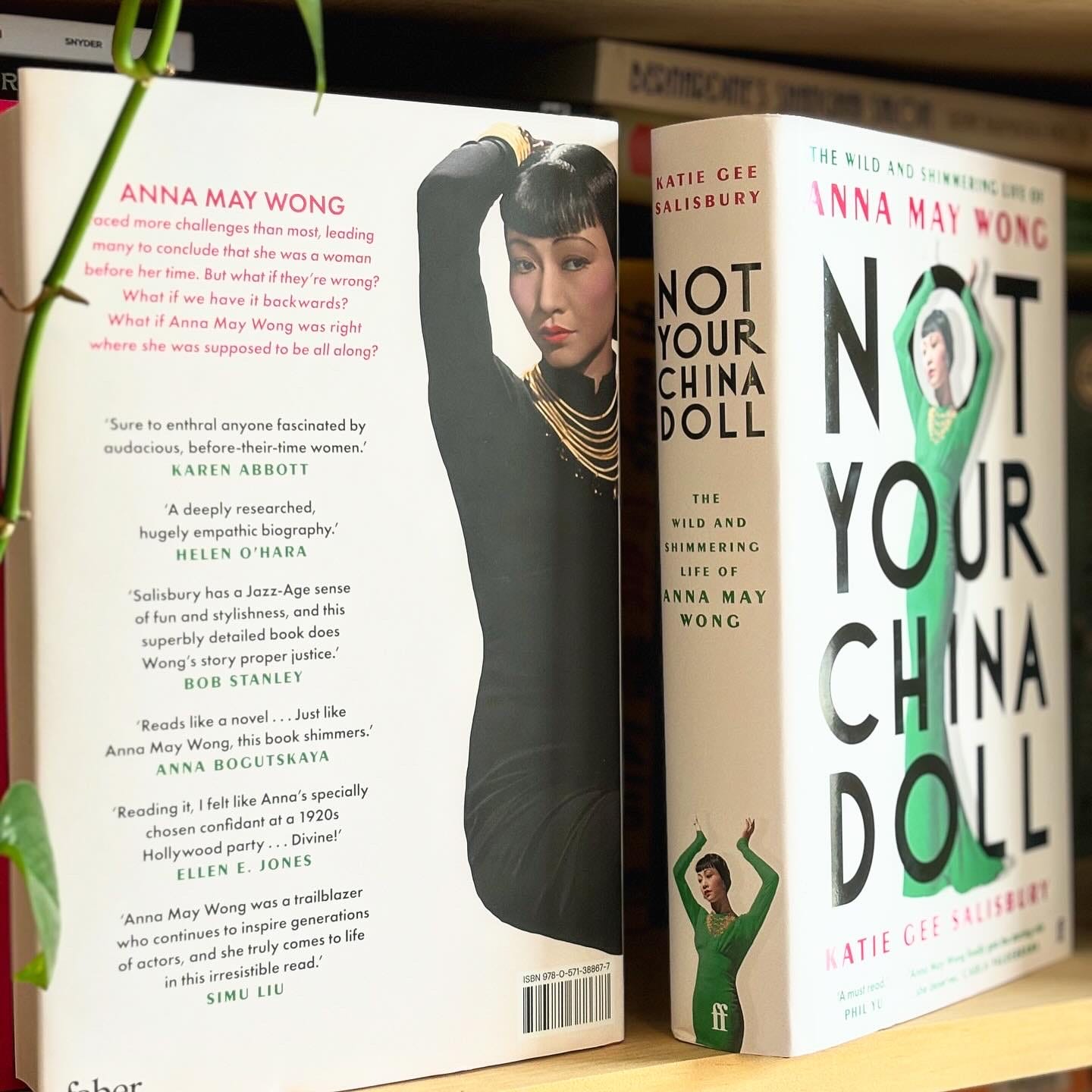
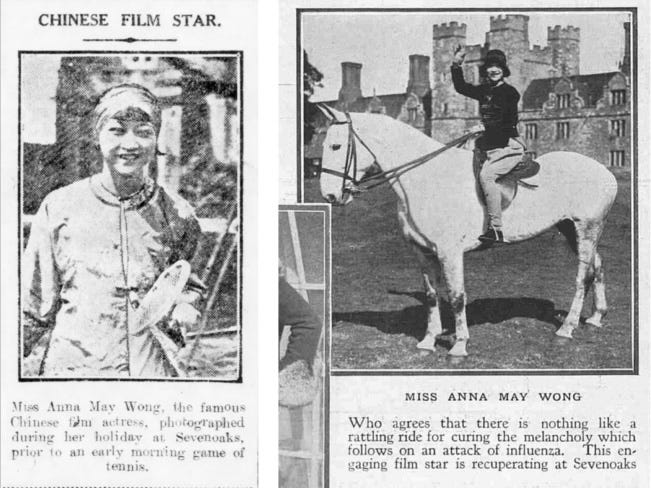
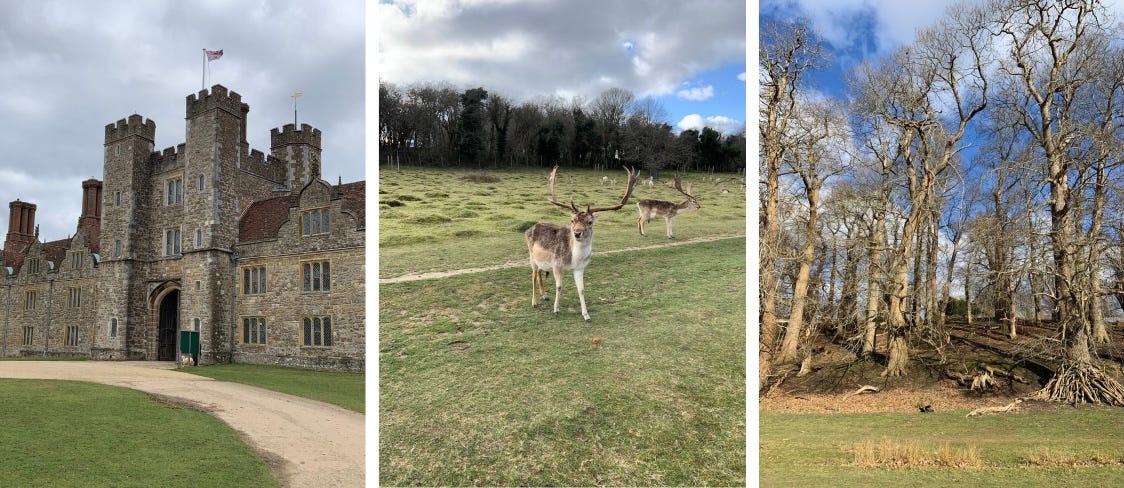
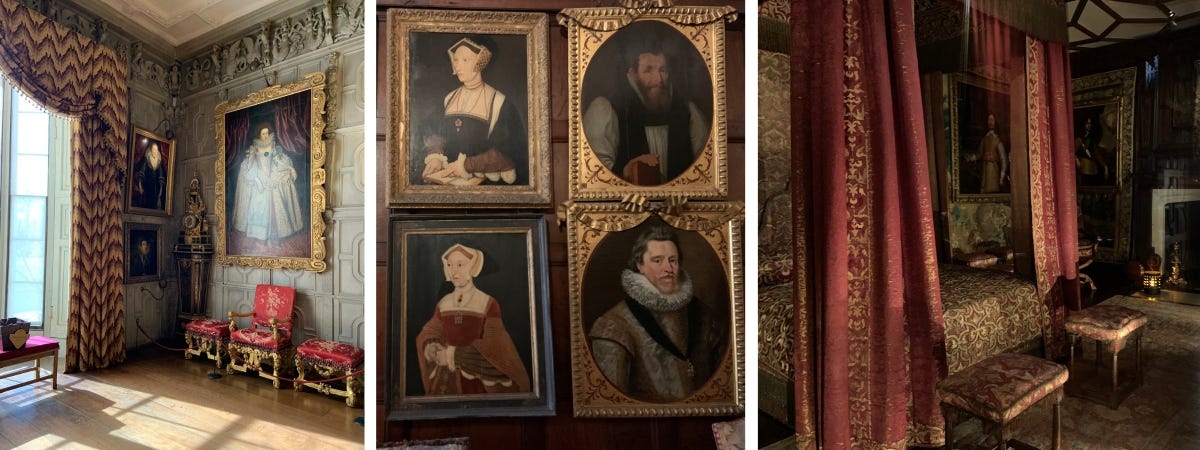


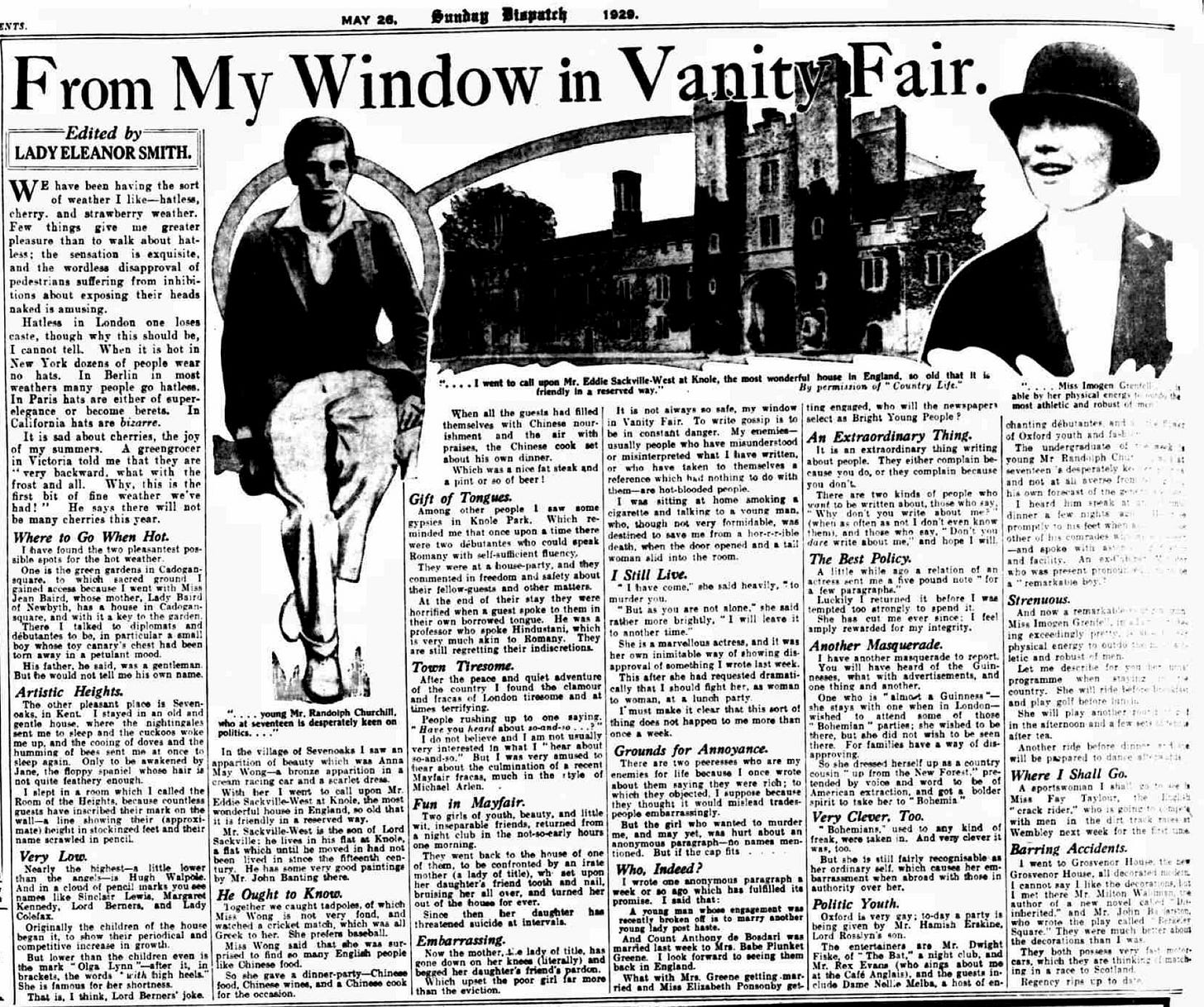

I only intended to scan this post, but it was so interesting, I read through. AMW was remarkable, and the history of the manor house intriguing,
What another great treat to read more about AMW. Thank you Katie Gee Salisbury for your book and all the mini stories of this wonderful woman, Anna May Wong. A delight !!